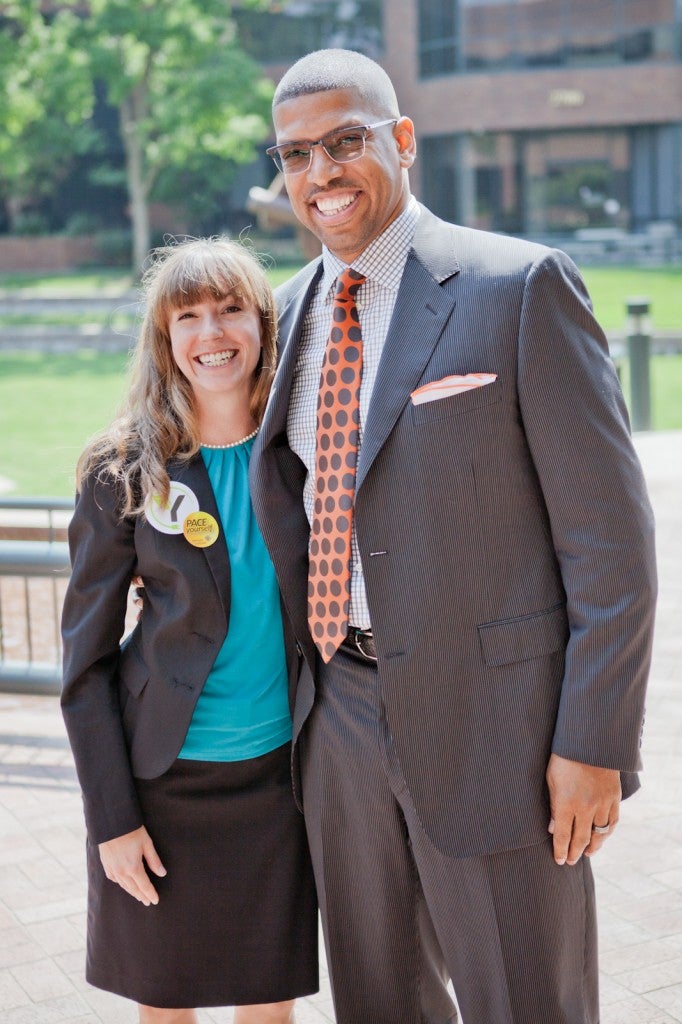This commentary originally appeared on EDF’s California Dream 2.0 blog.
By: Kate Daniel, EDF Climate Corps Fellow
Great news for California and the future of energy efficiency in Sacramento.
Today I took part in an announcement by Sacramento Mayor Kevin Johnson unveiling the nation’s largest Property Assessed Clean Energy (PACE) project in the country — and potentially a huge boost for businesses in the state’s capital.
Launched by Clean Energy Sacramento, the property owners of Metro Center, Metzler Real Estate, will now be able to take advantage of PACE financing to fund $3.1 million in energy efficient upgrades, including high efficiency rooftop units for heating and cooling and a state-of-the-art building management system. Ultimately, these upgrades will save $140,000 in annual utility costs for the property.
This project is not just good news for Metro and Metzler, but for the entire Sacramento region. Here’s how it works: Under the PACE program Metzler will receive private funding from Ygrene Energy Fund, who covers the upfront costs of the project Metzler pays the costs back on their property tax bill while Johnson Controls will design and implement the upgrades.
Why PACE?
For starters, PACE – and other innovative financing mechanisms like on-bill repayment (OBR) – offers several key advantages over traditional energy financing. First, the financing is tied to the property itself, rather than to the owner. This means that if the owner wanted to sell the building, it would not have to pay off the balance of the financing, but rather transfer to the next owner’s property tax bill. By doing this, PACE addresses a key obstacle in commercial real estate markets: frequent ownership turnover where owners are hesitant to make long-term investments.
It also means qualification for the financing is based on the value of the Metro Center property, not Metzler’s credit. Many properties can qualify for PACE financing that would not otherwise be able to obtain the capital necessary for a retrofit. PACE also addresses the biggest barriers to energy efficiency retrofits in commercial buildings. An annual survey by the Institute for Building Efficiency shows that available capital is the most common obstacle to making energy improvements. With PACE financing, the upfront costs of the project are financed externally, and don’t draw from funds that could be used for other projects or investments.
The next most frequently cited barrier to taking on energy efficiency is making a sufficient return on investment. This is where Clean Energy Sacramento’s low-interest rates come into play. Property owners also have the ability to extend the financing as long as 20 years, far longer than most real estate or construction loans. These features of the financing make individual payments lower, so the company can realize the benefits of energy savings immediately.
Lastly, PACE financing can address the split incentive problem, when property owners aren’t motivated to pay the costs of upgrades that save money for their tenants, who pay the utility bills. Under most commercial leases, property owners are able to pass on property taxes to tenants, so the current tenants would make the PACE payments, while still realizing savings on their utility bills.
Clearly, the Metro Center upgrade is a good deal for Metzler and the Center’s tenants, who realize the direct benefits of energy savings and increased property value and comfort.
Fortunately, the City of Sacramento gets why this is important to the rest of us. Energy retrofits keep contractors busy and working. The Metro Center project itself will create 50 jobs in the Sacramento region and upgrades to Metro Center will make the space more appealing for tenants, attracting and retaining businesses in the area – all without spending public dollars.
The Metro Center project is a telling example of just how much a well-executed PACE program can provide for a community. Through my EDF Climate Corps fellowship, I’ll be working to help make these types of projects a reality across the region.











